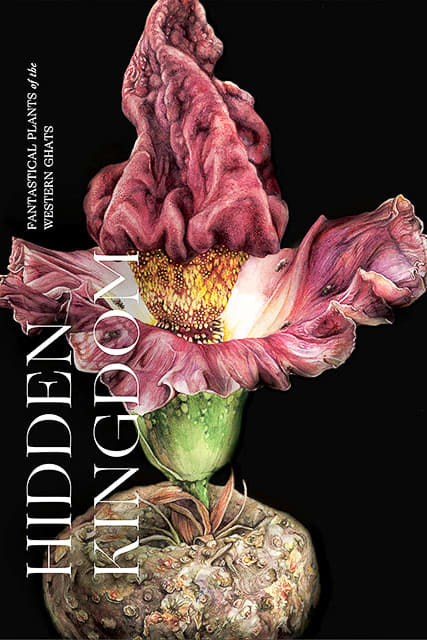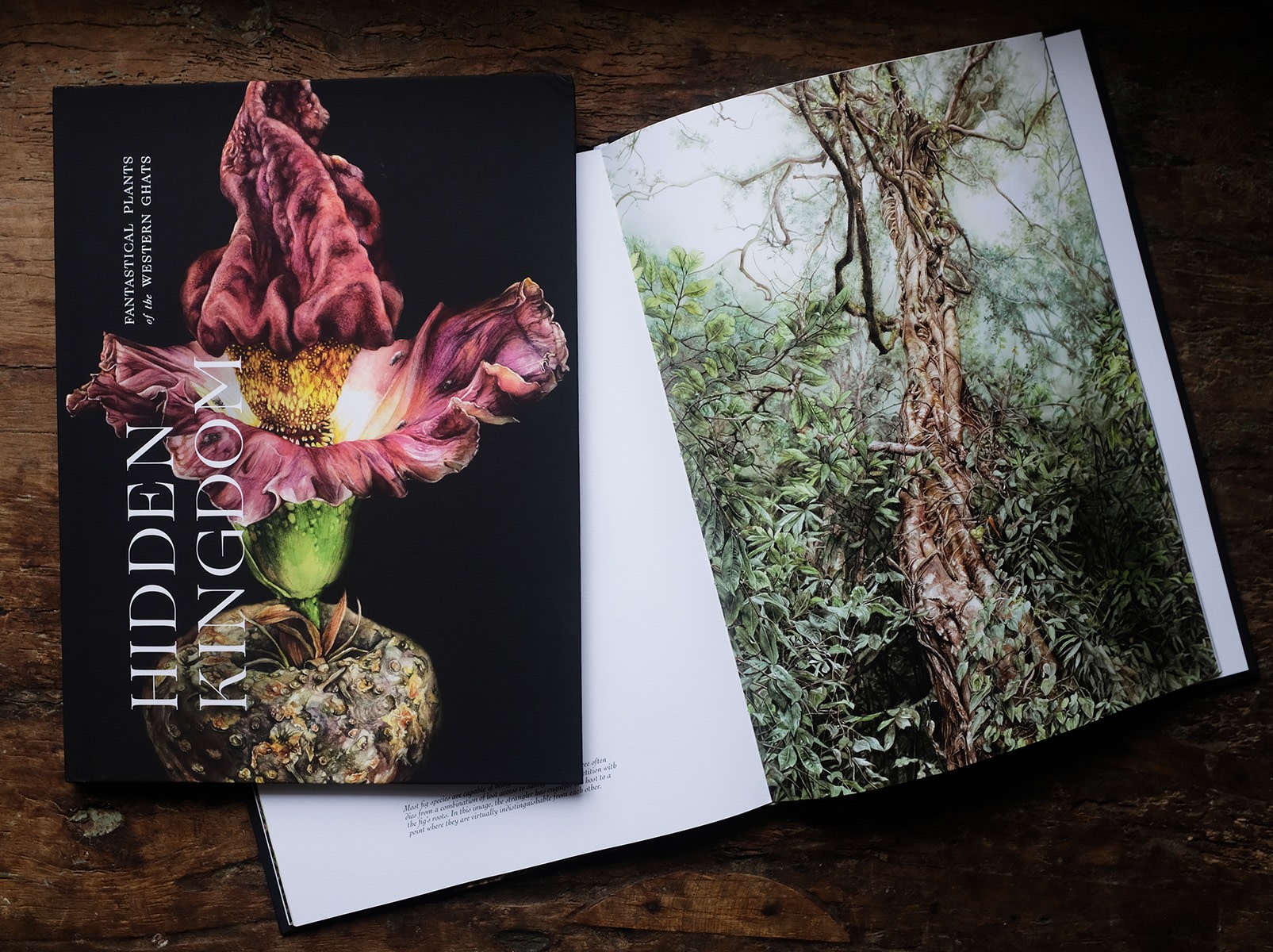 Listen to this article
•
15:34 min
Listen to this article
•
15:34 min
Illustrator Nirupa Rao grew up in Bangalore, in a family of botanists, where vacations often meant heading off to the Western Ghats to explore the rich, and extraordinary range of mountains. Early in life, she learnt to tell one plant from another, and marvel at all the secrets it held. But as she grew up, she realised that few who lived in the city around her shared these interests. “This is very peculiar to the times and the urban spaces we live. We have never been as disconnected from nature. Even adults struggle to identify extremely common trees they have grown up around,” she says.
What happens when generations grow up with little or no connection with the natural world around them? Will they fight save it? It is this nagging question, that gave birth to the idea of Hidden Kingdoms — an illustrated book that heroes some of the native botanical wonders of the Western Ghats through hand-drawn sketches, accompanied with ecological facts, set to enchanting rhyme. “Many find plants boring, but the ones that we have featured in this book demonstrate just show captivating plants can be,” says Rao. Among the eleven described in the book, there’s the ghost orchid (Epipogium roseum), that grows on dark forest floors, where sunlight is scant. And Neelakurinji (Strobilanthes kunthianus), which blossoms once every 12 years, and covers mountains in carpets of blue. Some locals have learnt to calculate the age in flowering cycles. Each of Rao’s sketches, illustrated with painstaking detail and attention to scientific accuracy, draws out their most fantastical features. “I am hoping the book inspires a way of looking at the natural world around us, to start noticing the finer details in a forest, and even in your own backyard. A forest or a local garden is not just a mass of green — each tree, plant, flower has a story to tell.”
The project, put together by illustrator Nirupa Rao; botanical researcher Siddarth Machado; conservation photographer Prasenjeet Yadav and brand-director Suniti Rao, hopes to excite children, as the magical realm of the lush mountain range once inspired their own childhood.

Cover photo: A view of the Western Ghats. Cover photo: Nirmal Kulkarni
Strangler Fig
Family: Moraceae
The term ‘strangler fig’ is applied to a particular growth pattern displayed by many species of the Ficus genus. The Ficus genus consists of around 850 species of trees, shrubs and vines collectively called ‘figs’. They are found natively throughout the tropics, and include some of our most beloved Indian trees such as the peepal (Ficus religiosa) and the banyan (Ficus benghalensis)—both of which display strangling behaviour.
It is essentially a growth method developed to get a leg up on the competition. The rainforest floor can be a difficult place for young seedlings to develop, as very little light filters down through thick overhead canopies. There is also a great deal of competition for water and nutrients with other plants. So unlike most other plants, strangler figs start their lives off as epiphytes on the branches of another fully grown tree. Their seeds are usually dispersed by birds, who drop them atop an existing tree, from where the fig begins to germinate. First, the strangler sends out many thin roots that crawl down the trunk of the host tree toward the ground, or dangle as aerial roots. Eventually, these roots hit the ground, dig in, and begin to compete with the host tree for resources. As the roots grow, they thicken and form a lattice around the trunk of the host, while putting out a thick canopy of leaves that overshadow the host, robbing it of sunlight. Eventually, the host dies of strangulation, loss of sunlight and root competition, and the strangler stands on its own as a hollow cylinder of roots.
Despite their deadly reputation, stranglers are an important part of rainforest ecosystems. Besides providing fruit for many species, their hollowed out trunks provide a home for many rodents, invertebrates, bats, birds, reptiles and amphibians.

Sundews
Family: Droseraceae
‘Sundew’ is the common name for the genus Drosera, one of the largest genera of carnivorous plants in the world. They are usually found in bogs, sandy banks or other mineral soils that are low in organic nitrogen and phosphorous content. They compensate for the lack of nutrients they would otherwise derive from the soil by trapping and ingesting insects — fungus gnats, ants, crickets, spiders, bloodworms, fruit flies and more. Sundews are equipped with stalked muciliginous glands which secrete a kind of glue that captures and holds fast insects that venture near. This glue resembles drops of dew, from where the plants get their name.
As the trapped insect struggles, it is covered in sticky mucilage and suffocates to death. The sundew then secretes a second kind of enzyme with which it digests the insect and extracts its nutrients.
Illustrations reproduced with permission from the book Hidden Kingdom
Text excerpted from the website https://www.hiddenkingdom.in/ that works as a companion to the book.






